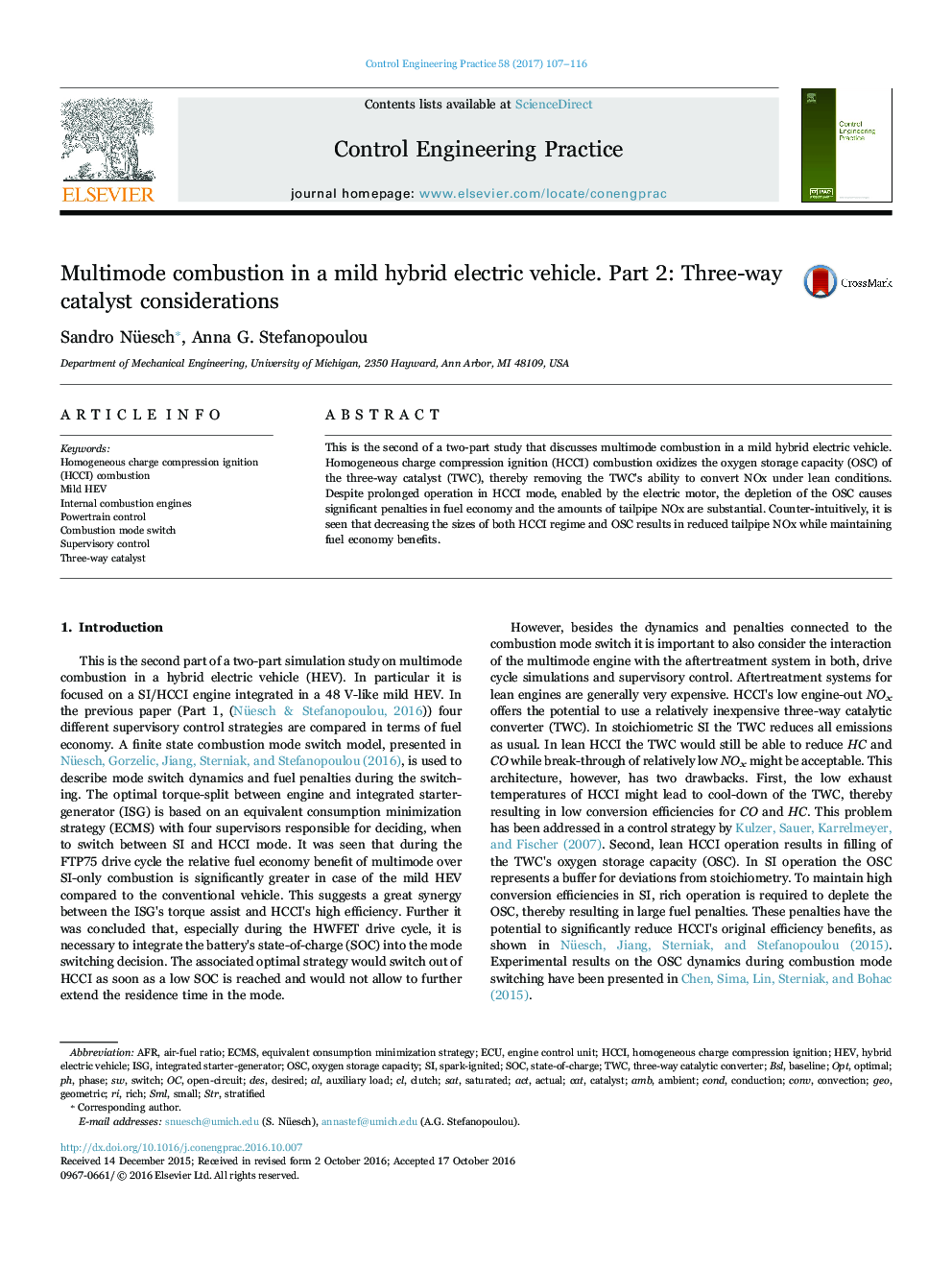| Article ID | Journal | Published Year | Pages | File Type |
|---|---|---|---|---|
| 5000455 | Control Engineering Practice | 2017 | 10 Pages |
Abstract
This is the second of a two-part study that discusses multimode combustion in a mild hybrid electric vehicle. Homogeneous charge compression ignition (HCCI) combustion oxidizes the oxygen storage capacity (OSC) of the three-way catalyst (TWC), thereby removing the TWC's ability to convert NOx under lean conditions. Despite prolonged operation in HCCI mode, enabled by the electric motor, the depletion of the OSC causes significant penalties in fuel economy and the amounts of tailpipe NOx are substantial. Counter-intuitively, it is seen that decreasing the sizes of both HCCI regime and OSC results in reduced tailpipe NOx while maintaining fuel economy benefits.
Keywords
SMLGEOTWCOSCCATSATHEVSTRBSLACTECUAFRECMsOPTHCCIOpen-circuitAMBISGCONVDESEquivalent consumption minimization strategySaturatedOptimalSwitchRICHState-of-chargebaselineHybrid electric vehicleThree-way catalystHomogeneous Charge Compression IgnitionSOCStratifiedOxygen storage capacityPhaseThree-way catalytic converterAmbientCondInternal combustion enginesair-fuel ratioConductionConvectiongeometric Engine control unitactualCatalystClutchPowertrain ControlSupervisory controlSmall
Related Topics
Physical Sciences and Engineering
Engineering
Aerospace Engineering
Authors
Sandro Nüesch, Anna G. Stefanopoulou,
